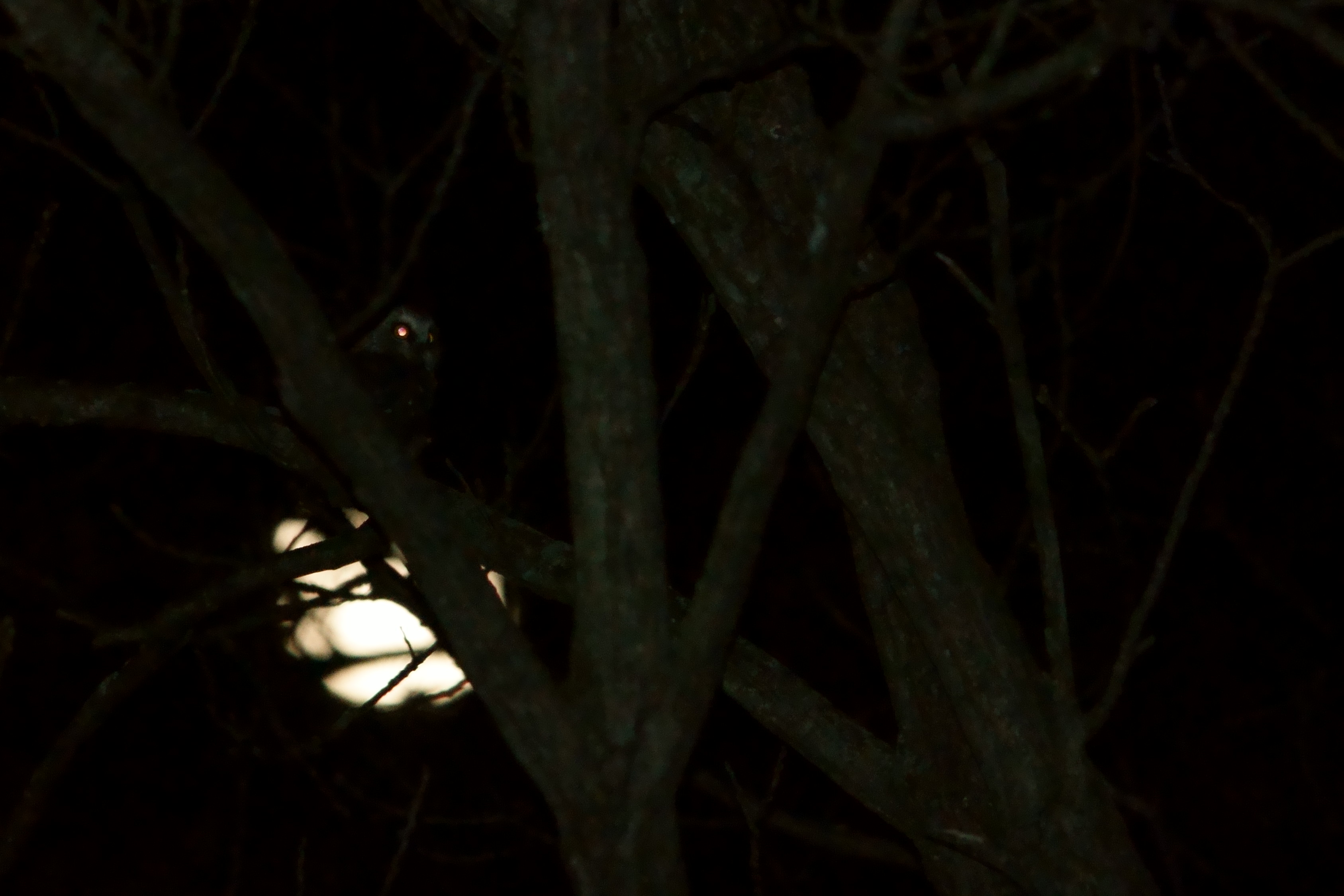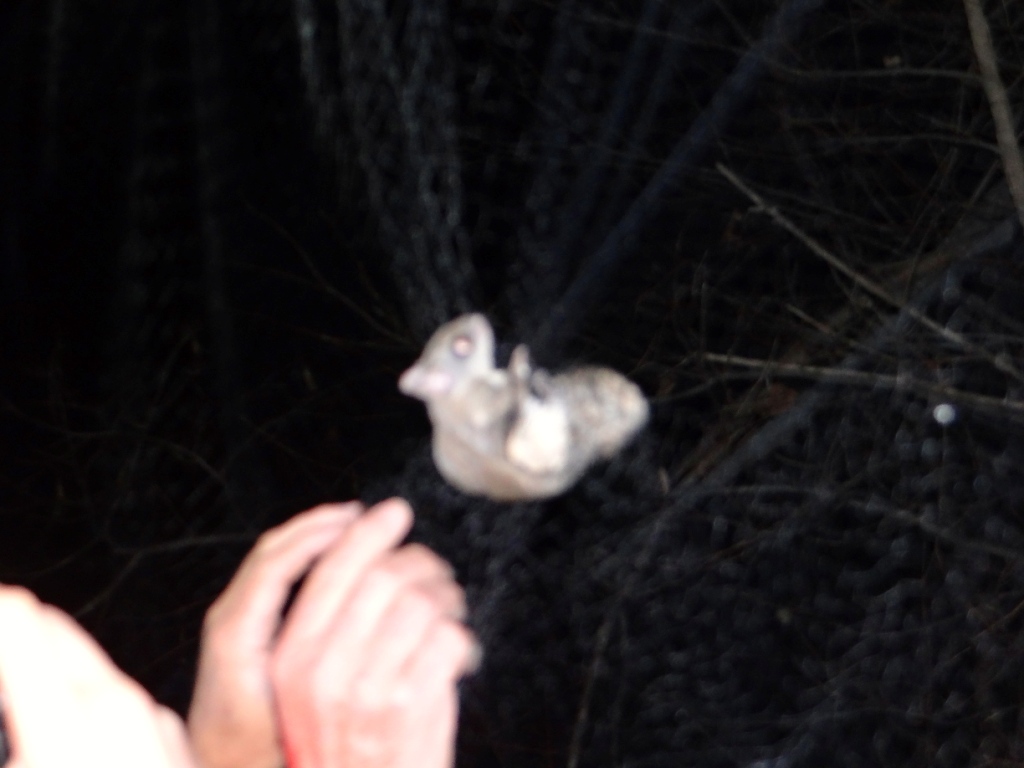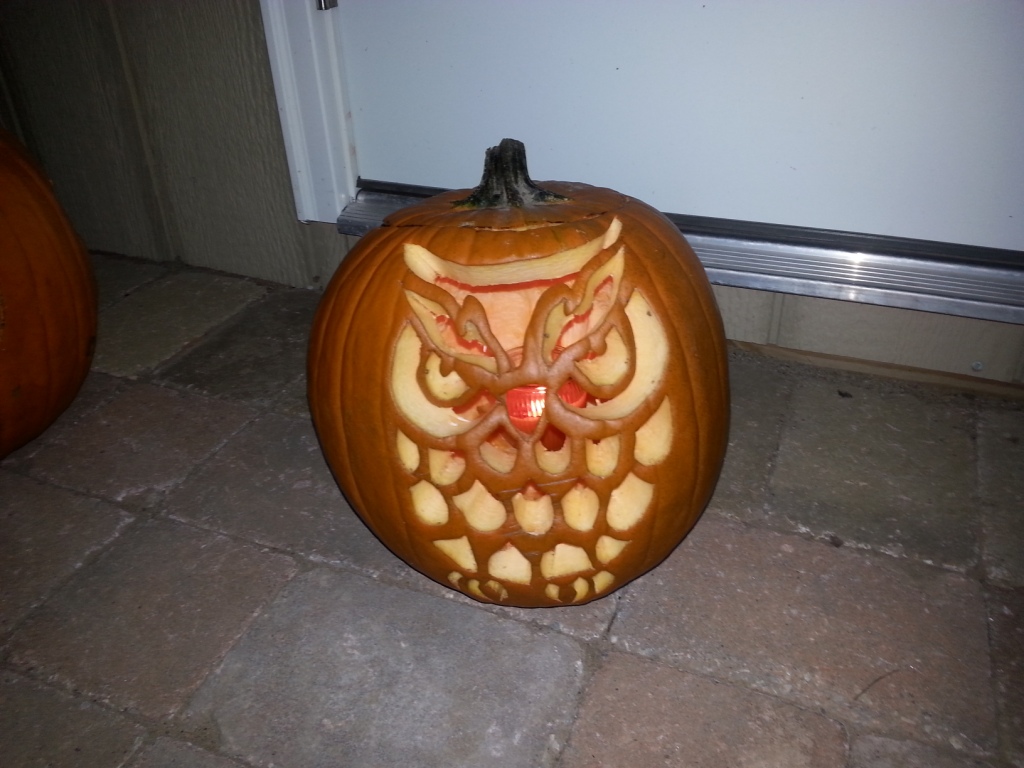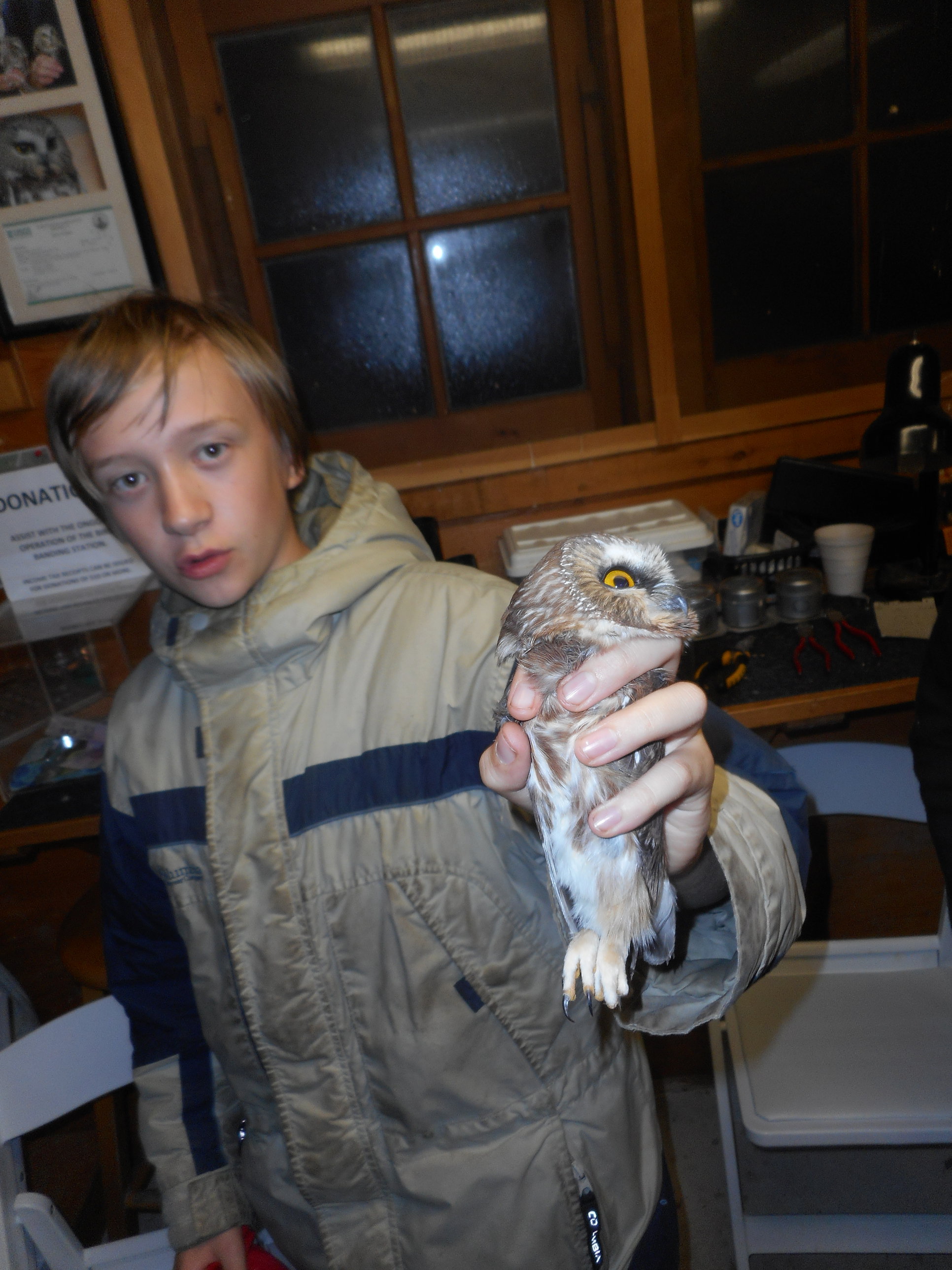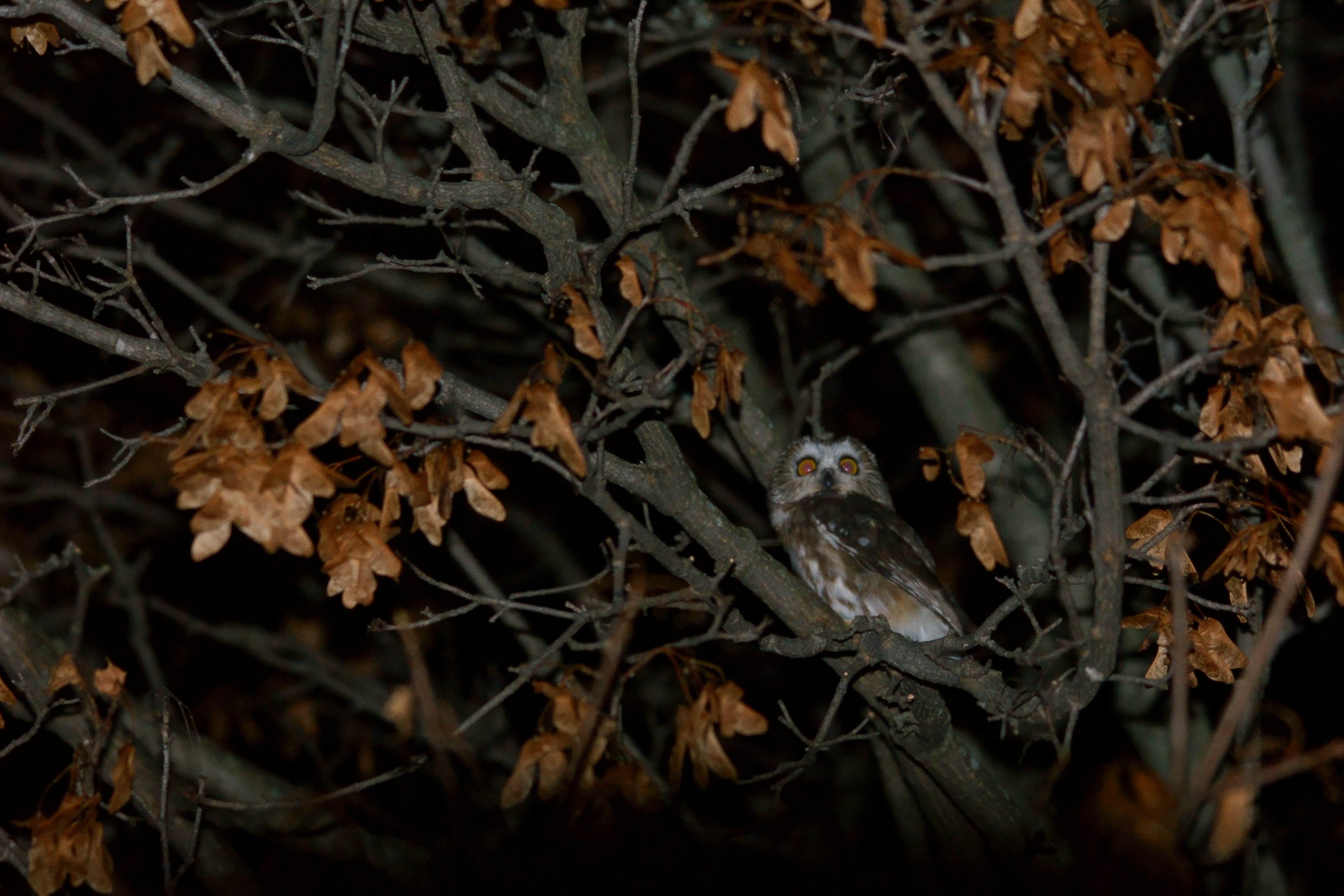It was the morning after the night before (I’ll talk about the night later). I wasn’t feeling on top of my game first thing this morning having been chasing owls just a few hours before but there was no room for lethargy – especially as the Baggers had the nets opened when I pulled into the parking area. (Don’t you just love youthful enthusiasm?…..and energy?)
Initially the rate of capture was just moderate but it picked up as the morning progressed, which isn’t the usual way of things – most often it’s the other way around. But with poor weather coming the birds seemed bent on feeding…and coming down from the treetops. American Tree Sparrows had moved in in large numbers and we banded 44 of them. In total we banded 113 birds!
Banded 113:
3 Northern Saw-whet Owls (the night before)
2 Downy Woodpeckers
1 Black-capped Chickadee
1 Ruby-crowned Kinglet
1 Hermit Thrush
17 American Robins
3 Cedar Waxwings
3 European Starlings
44 American Tree Sparrows
1 Fox Sparrow
1 Song Sparrow
2 White-throated Sparrows
19 Dark-eyed Juncos
3 House Finches
12 American Goldfinches
ET’s: 34 spp.
Owling
The banding lab was crammed with owl afficionadoes…so it was great to get owls in our first 3 net checks. Three were new birds and one was a retrap – a bird that we quickly learned had been banded at Nanticoke (north shore of Lake Erie) in October 2012.
There was another surprise: we came upon a Flying Squirrel in the top of one of the nets. This net had been bothered by “snapped” trammel lines over the past couple of weeks and I felt sure that I had found the culprit. I reached up to gently grab the little animal and remove it from the net. As soon as I touched it, the furry fiend launched itself, spread-eagled as it is wont to do, and landed square on my face. But only for a second; it jumped from there on to the top of another person’s head and then down to the ground. I was too surprised to laugh.
Photos:
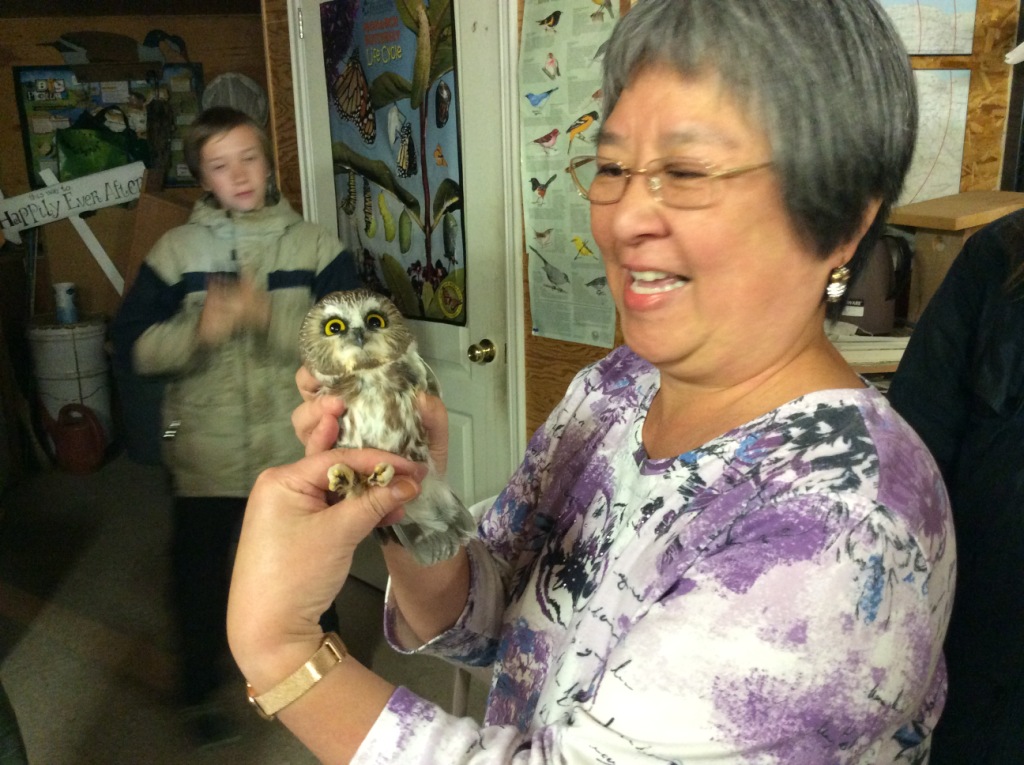
Pat Chow-Fraser demonstrating for her students how to be delighted in the presence of a Saw-whet. -B. Fraser
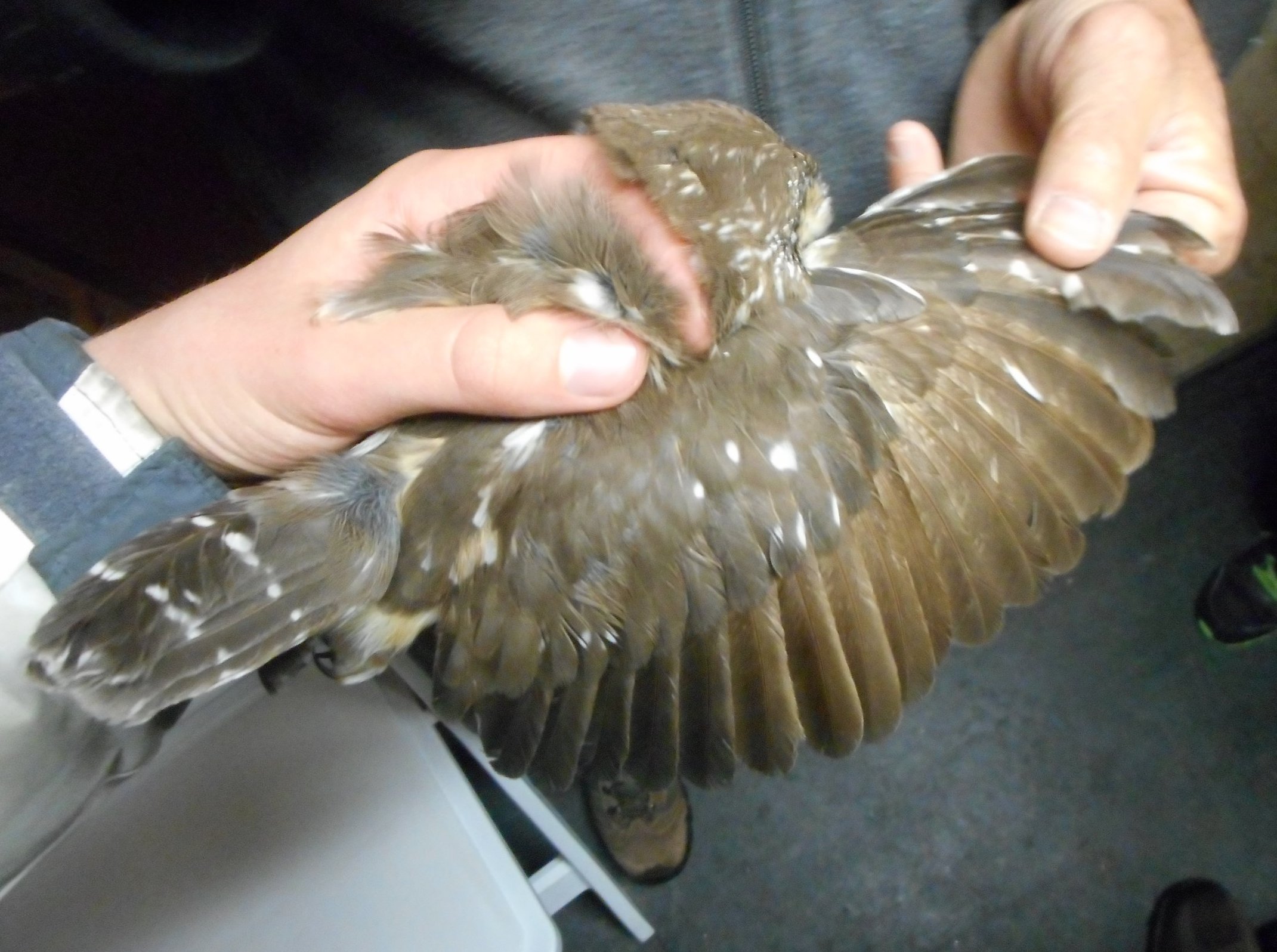
Note the 2 generations of wing feathers. The middle secondaries and primaries are old (light brown) and the outside secondaries and primaries are new (dark chocolate brown). -C. Scholtens

